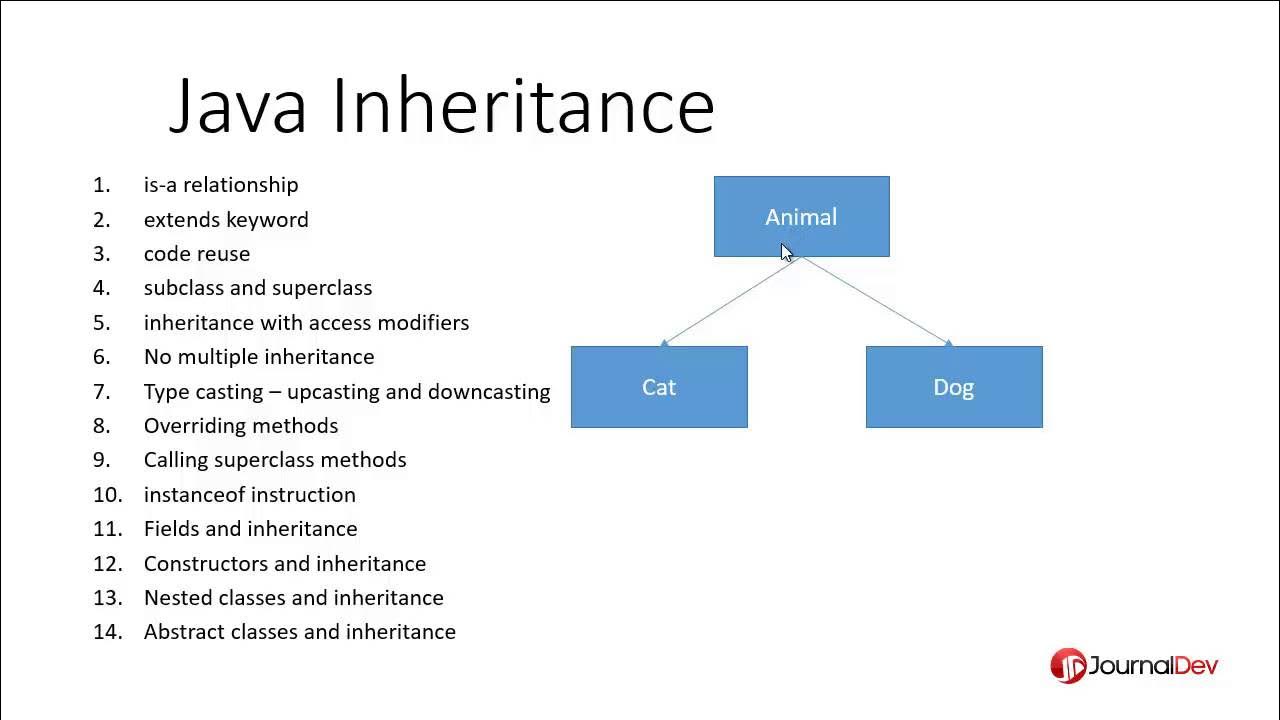#48 What is Inheritance in Java
Summary
TLDRThis video explains the concept of inheritance in Java using a calculator example. It starts with a basic calculator class that implements addition and subtraction methods. By introducing an advanced calculator class that extends the basic one, the video highlights how inheritance allows code reuse, enabling the advanced calculator to incorporate multiplication and division without duplicating existing code. The session emphasizes the advantages of inheritance, such as reduced redundancy and scalability, ultimately illustrating the 'is-a' relationship in object-oriented programming.
Takeaways
- 😀 Inheritance in Java allows a subclass to use methods and properties of a superclass, promoting code reusability.
- 😀 A simple `Calculator` class can be created with basic operations like addition and subtraction.
- 😀 Class files are generated each time a Java file is compiled, corresponding to the classes defined in the code.
- 😀 Deleting Java files does not affect the functionality of the compiled class files, as long as they exist.
- 😀 To add more features to a calculator, a subclass called `AdvancedCalculator` can be created to extend the `Calculator` class.
- 😀 The `extends` keyword is essential for creating a subclass in Java, establishing an inheritance relationship.
- 😀 Avoiding code redundancy is important; defining methods in a superclass prevents repetition in subclasses.
- 😀 The relationship of 'is-a' describes inheritance, where an `AdvancedCalculator` is a type of `Calculator`.
- 😀 Multiple classes can inherit from each other, allowing for more complex structures and features.
- 😀 Effective use of inheritance can streamline code maintenance and enhance functionality in programming.
Q & A
What is the main purpose of the calculator class in the script?
-The main purpose of the calculator class is to provide methods for basic arithmetic operations such as addition and subtraction.
How does Java handle class compilation when using multiple classes?
-Java compiles each class separately, creating a corresponding .class file for every class defined in the code. If a class is not used, it will not be compiled.
What happens if you try to use a method from a class that hasn’t been instantiated?
-If you attempt to use a method from a class that hasn't been instantiated, the method will not be available, and compilation will fail due to the method being undefined.
What are the two additional features added in the advanced calculator class?
-The advanced calculator class adds multiplication and division features to the existing addition and subtraction functionalities of the basic calculator.
What is inheritance, and how is it implemented in the script?
-Inheritance is a mechanism that allows a class (subclass) to inherit methods and properties from another class (superclass). In the script, it is implemented using the 'extends' keyword.
Why is it important to avoid redundancy in code, as mentioned in the transcript?
-Avoiding redundancy is important because it simplifies maintenance, reduces the risk of errors, and ensures that updates or changes need to be made in only one place in the code.
What is the relationship between the advanced calculator and the basic calculator in terms of class hierarchy?
-The advanced calculator is a subclass of the basic calculator, meaning it inherits all the methods of the basic calculator while also having additional methods of its own.
How does the script illustrate the concept of 'is-a' relationship in OOP?
-The script illustrates the 'is-a' relationship by stating that the advanced calculator 'is a' calculator, meaning it possesses all the characteristics of a calculator, along with its own additional features.
What is the significance of the 'extends' keyword in Java?
-The 'extends' keyword in Java signifies that a class is inheriting properties and methods from another class, allowing for code reuse and the creation of a class hierarchy.
What would happen if the basic calculator class file was deleted?
-If the basic calculator class file is deleted, the advanced calculator can still function as long as it was previously compiled, because Java can work with the existing class file even without the source code.
Outlines

This section is available to paid users only. Please upgrade to access this part.
Upgrade NowMindmap

This section is available to paid users only. Please upgrade to access this part.
Upgrade NowKeywords

This section is available to paid users only. Please upgrade to access this part.
Upgrade NowHighlights

This section is available to paid users only. Please upgrade to access this part.
Upgrade NowTranscripts

This section is available to paid users only. Please upgrade to access this part.
Upgrade NowBrowse More Related Video
5.0 / 5 (0 votes)





